How to check the voltage in the outlet with a multimeter: measurement rules
Safety during installation and repair of wiring devices must be ensured by all possible means. It is necessary to exclude both light strokes and severe electric shock. Do you agree? Before performing actions with electric points, it is necessary to check the voltage, which is carried out using a multimeter.
We will tell you what this portable device is and how it works, used both by home craftsmen and professional electricians. Here you will learn how to check the voltage in the socket with a multimeter, and also whether there is voltage in the network itself. Let’s see how current measurements are made with its help.
For you, we have described in detail the types of multimeters, given the rules for their use. To optimize the perception of a difficult topic, photo collections, schemes, and videos were applied.
The content of the article:
Multimeters, testers and their varieties
A multimeter, aka multitester, is a special device for measuring a wide variety of characteristics and parameters of an electric network, as well as parts and elements powered by it.
The device is designed so that at the construction or repair facility it was possible to determine with high accuracy:
- direct and alternating voltage;
- alternating and direct current;
- resistance, capacitance and more.
In addition to the above parameters, multimeters are equipped with additional measurement functions, which also allows testing transistors, “ringing” wiring cable to the junction box and the wires coming out of it, check the operation of the diodes, etc.
Metric devices come in two main types: analog and digital. These devices differ in functionality, measurement accuracy, build quality, and equipment. In any case, these are very useful measuring systems for everyone.
In an analogue multitester, the measurement result is displayed using the usual arrow on the scale. Sometimes the operation of such an analog device is not entirely appropriate - it is difficult for a beginner or non-specialist in the field of electrical engineering to deal with all scales, the “division price” of a certain parameter, and calculate the final value of the electrical characteristic.
And yet, the analog tester does not have a fixed arrow on the position, which makes it difficult to read the result and generally work with the device.
A digital multimeter presents the measurement results as digital values on a liquid crystal screen. It provides utmost ease of use of the device, eliminates any errors associated with taking readings and calculating the required parameter, taking into account the “division price” of the scale. This is one of the main reasons for the popularity of digital multi-testers among masters.
Standard multimeters can cost more than 5 cuBut one thing always remains the same - the central place on the panel is occupied by a rotary trigger. The location of the remaining controls at the corners of the panel does not change, the presence of the necessary connectors at the bottom of the panel, multi-colored legend.
If you will purchase such a product, be sure to buy it with an external silicone case that protects from dust, moisture, drops from a small height, has special clips and a stand, which is very useful in the most unexpected situations of multitester operation.
Household power supply
Given the topic and specifics of the article, we are talking about the metric measurement of a household power network. But to carry out work on determining the parameter values, it is necessary to have at least an approximate idea of household electrical power networks.
And the socket, in this case, acts exclusively as the “outlet point” of the voltage, so it is reasonable to know what voltage the consumer will “operate” with the socket.
Around the world, there are several main categories of electrical power networks for household appliances, one of which is “ours” 220 V at a frequency of 50 Hz. It represents two wires ("phase" and "zero"), the voltage between which is 220 V.
Recently, for supply systems for private houses and apartments, a 3-phase 380 V voltage network with a frequency of 50 Hz is sometimes connected to “power” such devices as a pumping station, compressor, lathe, etc.

A logical question arises: why is it necessary to measure the characteristics of the network? On the one hand, the answer is obvious: if you do not know or are not confident in your beliefs about the outlet that you see in front of you and you need to do some work with wiring.
On the other hand, most electrical appliances are precisely designed for a specific frequency and voltage. Some electrical devices are designed to operate on a power source with a frequency of 60 Hz.
For example, the imported microwave oven manufactured in South Korea is equipped with a transformer, which can easily “swell” from “our” 50 Hz and it (the oven) will quickly fail.
Exceeding or decreasing the frequency, voltage and current strength can significantly change the efficiency of the devices, as a result, the electrical device breaks them down and subsequent operation is impossible. Multimeters are needed to measure and control such network parameters.
Safety precautions before work
A multitester is a multifunctional portable device that is powered by a battery (usually a “crown”) and is a convenient, and most importantly safe, tool for the end user. But for its operation, there are certain rules of use.
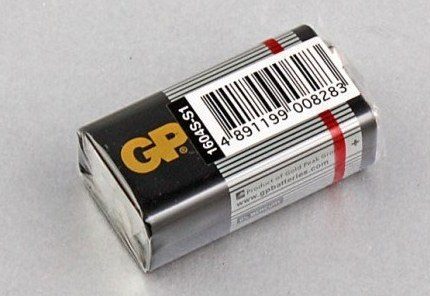
The tester itself is equipped with internal protection against overloads and overvoltages. But without following the rules below, it can also easily “burn out”, partially fail. To avoid this, there are a number of general rules for the safe operation of a digital tester.
When measuring the input AC voltage:
- If the preliminary value of the measured voltage is not determined, put the switch in the largest range.
- Do not apply voltages greater than 750 V to the input to avoid damage to the internal circuit.
Do not touch electrical components with your hands without dielectric gloves.
When measuring input DC and AC current:
- If the preliminary value of the measured current is not determined, put the switch in the largest range.
- If “1” is set on the LCD, set the trigger to the next range to increase the maximum value.
- When working with the “20A” connector, the test time should not exceed 15 seconds, since there is no fuse for this mode.
When measuring the internal resistance of the circuit, you need to make sure that the circuit power is off and all capacitors are discharged to “zero”.
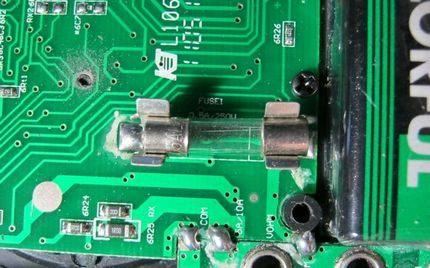
In addition, there are special rules for the care and storage of the device, namely, it is not necessary to apply voltage to the input if the rotary switch is in the Ohm position, to work with the device if the housing cover is not completely closed. Lastly, the replacement of the galvanic battery and the fuse is carried out only when the device is turned off and the probes are disconnected.
Multimeter Symbols
In fact, a multi-tester consists of several standard parts: a display (in analog - a scale with a protective glass), a multi-position rotary switch, connectors for connecting probes. In this article, as a multimeter, the model DT9205A is considered.

Buttons:
- ON / OFF - turn on / off the device;
- HOLD - Holds the displayed value on the LCD screen.
Central Switch Sectors:
- hFE - measurement of transistor parameters;
- F, Ω- capacitor capacitance testing and resistance;
- A-, A ~ - direct and alternating current;
- V-, V ~ - direct and alternating voltage.
Main connectors:
- 20A - socket for measuring current strength up to 20A, red probe;
- A - socket for testing current strength within ranges;
- COM - socket for all modes, usually connect a black probe;
- VΩ - socket for measuring resistances and voltages.
The “pnp / npn” section connectors are semiconductor testing, the “cx” sections are connectors for inserting the tested capacitor. It is imperative to observe the polarity otherwise it will “swell”.
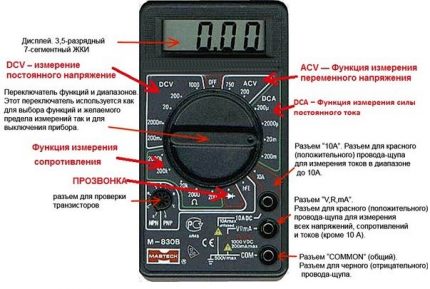
Connecting probes to a multimeter
Test leads are a special type of connector that helps measure the characteristics of electrical parts and sections of a wire circuit. They easily connect the necessary connectors of the multitester with other outputs.
Usually they are a metal rod and plastic insulation, on one end of which the rod exit from the other is a wire with a connector for insertion into the connectors 20A, A, COM and VΩ of the device.
In addition, sometimes in the arsenal it is necessary to have an additional set of probes, but instead of the rod metal “crocodiles” are used - toothed clamps.
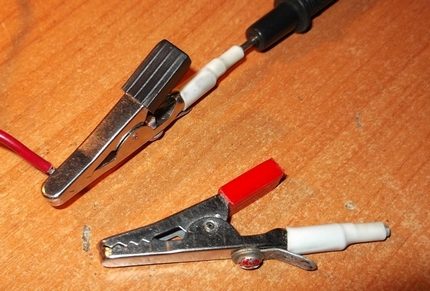
Most devices are imported from China, where they are manufactured in factories, workshops and mini-workshops. In this regard, manufacturers save on everything, including materials for the probes, which quickly fail.
It is recommended to make the probes yourself by buying parts on the radio market or in the radio store. Instead of insulating plastic, empty ampoules and shells for ballpoint pens are often used.
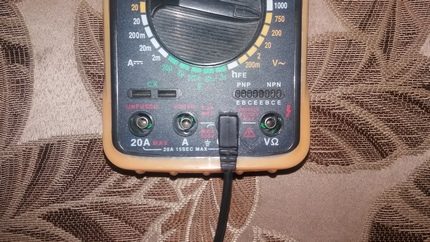
We connect the plug of the black probe to the multimeter connector with the symbol COM. And the plug of the red probe is connected to the connector with the designation VΩ, which is designed to measure direct and alternating voltage.
We strongly do not recommend clamping the red and black probes to a contact in any mode, with the exception of the rotary switch at the “►” position (ringing the chain).
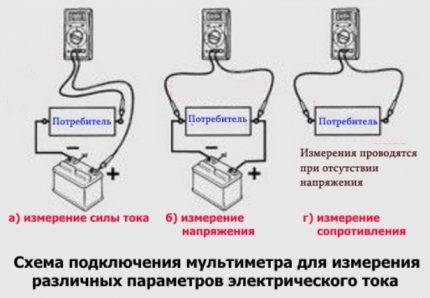
AC voltage measurement
Introductory and preparatory work done. We proceed to the actual completion of the assignment. First of all, turn off the multitester, if it is turned on. Press the ON / OFF button.
We translate the rotary trigger of the multimeter to the “750” position (in other testers there may be 600, 1000) of the “V ~” section. This means that the device can measure AC voltage in the range from 0 to 750 V.
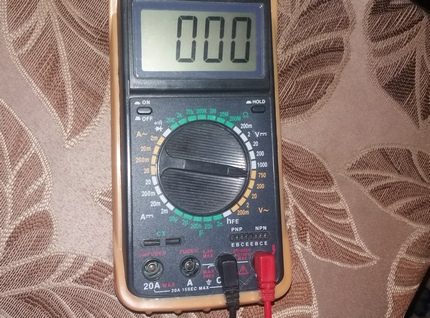
We turn on the tester, at least one “zero” should appear on the LCD screen - the device is ready for operation. We put the probes into the holes of the outlet in turn, it does not matter which one. We take readings of alternating current of a household power supply network.
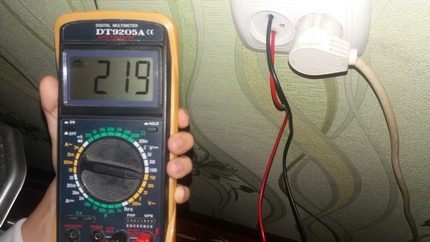
Work on testing the power supply network must be carried out quite accurately, slowly and without touching the exposed parts of the probes.
Outlet current measurement
Never, under any circumstances, directly measure the AC power of an outlet with a multi-tester without a connected load. If you just put two probes from the tester into the outlet, you can “say goodbye” to the device. As a result, we get a “New Year's fireworks” and a burnt out electrical measuring device.
Current in ordinary outlet necessarily measured with a series-connected load in the circuit “tester-socket”. As an elementary load, even an ordinary light bulb with a cartridge (the place where the lamp is screwed in) can act.
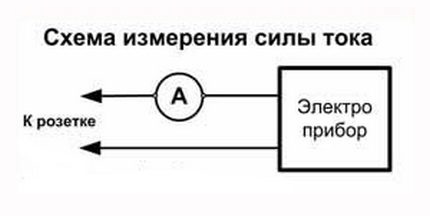
By connecting the tester and the bulb in series, we insert one of the probes into a socket, and connect one wire from the bulb base to the other probe. The second wire of the bulb is inserted into the free hole of the outlet. Take the current value. It is not recommended to measure more than 15 seconds in time.
And yet, current is not recommended to be measured in the socket. This does not carry any meaning. Household power supply has just the maximum limit in amperes that must be respected.The current strength always exists only in the presence of a load, where we measure the current.
Battery voltage and current measurement
Instead of measuring the current strength in the outlet, it is better to learn how to measure direct current and voltage in batteries, accumulators and power supplies. It is much more interesting and safer. In addition, everyone has enough of these electrical elements. They are usually found in such things as cameras, phones, tablets, children's toys, etc.
Batteries and accumulators are easy to distinguish: they all have special inscriptions near the output contacts in the form of “+” and “-“ icons. Testing such elements is not nearly more difficult than the voltage or current in the outlet.
It should be noted that these batteries are usually characterized by small values of voltage and current. To measure a constant voltage or current on a battery, it is necessary to switch the rotary trigger of the multi-tester to the corresponding mode of the “V-” or “A-” sections, which is greater than the value indicated on the outer shell of the element.
Turn on the tester. The black probe (zero) is connected to “-“, and the red probe is combined with “+”. We remove the fixed constant value. In this way, you can measure the main electrical parameters of the batteries, which will help determine their operating condition.
Conclusions and useful video on the topic
The clip will clearly demonstrate the sequence of actions during the measurement in dynamics:
The article readily talks about how to measure the voltage and current in the socket to all friends and only those who are familiar with electric points and electrical wiring. Using a multimeter will significantly reduce the likelihood of hazardous situations when installing and repairing wiring, replacing sockets and switches.
Want to provide some interesting information about using a multimeter? Have questions in the process of getting acquainted with the article? Please write comments in the block intended for feedback.

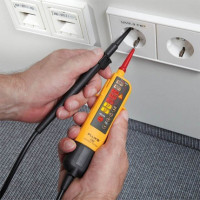 How to check the grounding in the outlet: methods of testing using devices
How to check the grounding in the outlet: methods of testing using devices 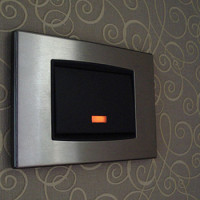 How to connect an LED switch: rules for connecting a backlit switch
How to connect an LED switch: rules for connecting a backlit switch 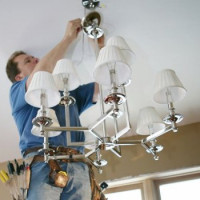 How to connect a light bulb through a switch: schemes and connection rules
How to connect a light bulb through a switch: schemes and connection rules 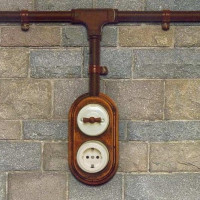 Overhead sockets and switches: rules for safe installation and connection
Overhead sockets and switches: rules for safe installation and connection 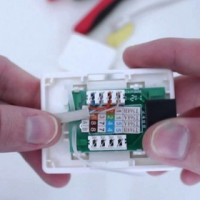 How to connect a telephone socket: connection diagram and installation rules
How to connect a telephone socket: connection diagram and installation rules 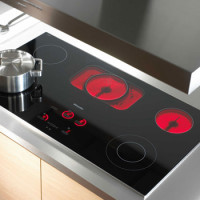 Power socket for electric stove: types, device, technical standards and rules for connection
Power socket for electric stove: types, device, technical standards and rules for connection  How much does it cost to connect gas to a private house: the price of organizing gas supply
How much does it cost to connect gas to a private house: the price of organizing gas supply  The best washing machines with dryer: model rating and customer tips
The best washing machines with dryer: model rating and customer tips  What is the color temperature of light and the nuances of choosing the temperature of the lamps to suit your needs
What is the color temperature of light and the nuances of choosing the temperature of the lamps to suit your needs  Replacement of a geyser in an apartment: replacement paperwork + basic norms and requirements
Replacement of a geyser in an apartment: replacement paperwork + basic norms and requirements
I admit, once in an attempt to measure the voltage in the network, I burned an analog tester. He worked in the dark and turned the turntable on the wrong side of the device, and it turned out that he turned it on to measure the resistance, and not to alternating current. When I put the probes into the socket, it flashed well, even the tip of one of the probes melted. I thought the whole device came to an end, but fortunately, it did not completely fail, only the randomly selected ohmmeter function burned out.
Personally, I thought that everyone knows how to work with testers. At least measuring the voltage in the AC network does not cause any difficulties. By the way, I do not agree that modern devices are sharpened under a clear voltage. As a rule, their power supplies can withstand surges from 180 to 240 volts. But with gertsovka really need to carefully monitor.
And why should everyone be able to work with a multimeter / tester? Not all electricians. Here, for example, I needed to measure, but I don’t know how to approach. Yes, and frankly scared to shove something into the outlet. And so I read it and now at least have an idea how to do it right.
Can you recommend a normal reliable multimeter? Interested in voltage, current and resistance, other functions are not necessary.
Good afternoon, Nikolai.
It turns out that you need a basic level device. Sites that post the conclusions of analysts in the market for electrical measuring instruments tend to believe that the best option is to purchase the Mastech MAS838. I think its 900-ruble price of your budget will not undermine. Passport screenshot attached.